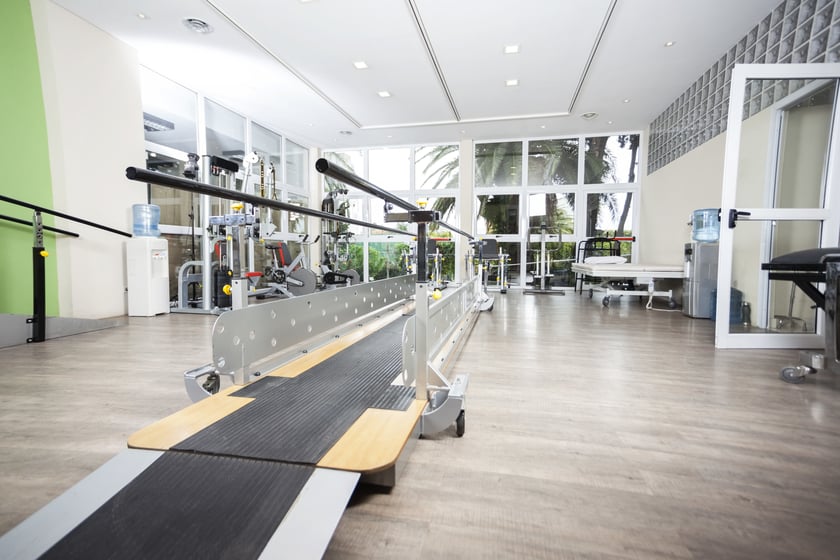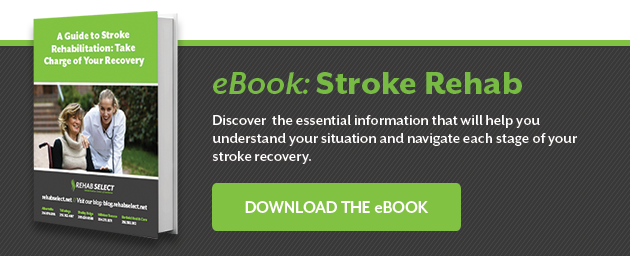Stroke rehabilitation aims to help stroke patients deal with the side effects of a stroke. These side effects may be physical, cognitive, or psychological, and will vary in intensity depending on the severity and location of the stroke.
What Happens During Stroke Rehab?
Stroke rehabilitation will usually consist of a combination of:
- Physical therapy to address symptoms like muscle weakness or paralysis, balance problems and difficulty with walking;
- Occupational therapy to help patients gain the fine motor skills and muscle strength they need to complete day-to-day activities;
- Speech therapy to restore normal speech and address slurring or problems swallowing.
- Some patients may also receive counseling or psychotherapy to manage the emotional impact of the stroke.
Stroke rehab is administered by a team of specialist medical professionals, including physicians, medical nurses, occupational therapists, physical therapists, speech therapists, social workers, and psychologists.
When the patient is admitted to stroke rehab, the therapy team will evaluate their current state of health, and design a customized rehab program to help address and minimize the after-effects of the stroke. The duration of a stroke rehab program will vary, depending on the patient’s medical coverage and physical needs, but will usually last for a minimum of 21 days.
Typically, the patient will have regular meetings with an overseeing physician, and may also receive a weekly session with a psychiatrist to address any psychological impediments to recovery. Occupational and physical therapy will usually take place every day; this will normally consist of structured and supervised exercises to improve strength, tone, balance, and agility.
Types of Stroke Rehab Centers
Stroke rehab can take place at a number of different types of facilities. Typically, rehab will start in the hospital, as soon as possible after the stroke took place, to try and reduce the impact of the stroke and take advantage of post-stroke neuroplasticity. Once the patient is ready to be discharged from the hospital, they will move on to a new rehab facility, depending on their needs:
1. Inpatient Stroke Rehab Centers
Inpatient rehabilitation is the most intensive form of post-stroke rehabilitation. Inpatient stroke rehab centers may be part of a larger hospital complex, or may be independent care facilities. Usually, a stroke patient will remain in an inpatient program for two to three weeks. During that time, they will receive 24-hour medical supervision and participate in a customized program of intensive therapy from a team of specialists.
2. Skilled Nursing Facilities
Skilled nursing facilities are aimed at patients who are not yet ready to return home, and who still need some medical care and supervision, but who are not in need of the full-time intensive rehab offered in an inpatient facility. Some patients may qualify for rehab while in a skilled nursing facility.
3. Nursing Homes
Nursing homes offer long-term nursing care for patients who are unable to care for themselves after a stroke. In some cases, some rehab services may be available.
4. Outpatient Rehab Services
For patients who are not too severely affected by a stroke, or who are able to arrange for at-home care, outpatient rehab may be an option. Patients may either travel to a rehab center in a hospital or medical facility, or they may receive rehabilitative therapy in their own home.
Which Are the Best Stroke Rehab Facilities?
If you or your loved one has suffered a stroke, you may feel uncertain about the best stroke rehab facilities. The American Stroke Association recommends that in general, patients who have suffered a serious stroke should participate in intensive inpatient rehab for as long as possible.
Skilled Nursing Facilities are appropriate when patients no longer need full-time hospital care but are not yet well enough to return home. Outpatient rehab is suitable only if the patient has enough support at home to ensure their safety while they recover, or if the patient is only experiencing mild side effects after a stroke. At-home therapy has the disadvantage that no professional equipment is available; however, in some cases, it may be beneficial for the patient to receive care in their own home to become confident in their daily routine once more.
Questions to Ask When Choosing a Stroke Rehab Facility
Some people find choosing the best stroke rehab facilities overwhelming. Here are some questions that you should resolve before selecting a rehab facility for you or your loved one:
Questions for your insurance provider:
- What rehabilitation services are covered by the patient’s medical policy?
- What is the maximum amount of rehab that the patient can receive?
- What rehab facilities are in your insurance network?
- Are there any additional financial resources available?
- Who will cover unexpected additional medical costs?
To ask the rehab facility (based on guidelines from the American Stroke Association):
- Do they offer a specialist stroke rehab program?
- How many patients are currently receiving stroke rehab care?
- How will progress be evaluated?
- How do they measure functional recovery?
- What treatments are available?
- Where will rehab take place?
- How do they assure the quality of care for each patient?
- Are they certified to treat stroke patients?
- What percentage of short-term stroke rehab patients are discharged home?
- What support do they offer family members and caregivers?
- What psychological support is offered to stroke patients?
- How do they prevent falls?
- How do they prevent reoccurring strokes?
- What specialist training do the nurses, therapists and support staff have?
- Which professionals will be involved in patient care?
- How frequently will the patient see a physician?
- Do they offer 24-hour medical supervision?
- What will the patient schedule look like?
How is Rehab Select’s Stroke Rehab Program Different?
With many stroke rehab programs, it can be difficult to know which one to choose. Rehab Select’s specialized rehab facilities have helped hundreds of patients recover after a stroke. Here are just a few of the ways in which Rehab Select centers are different:
1. We are trying to get the patient back home.
At Rehab Select, the goal is to restore the patient to their daily life as quickly as possible. In the words of Rehab Select's Stroke Rehab Program Director Beth-Ann Roseberry, OTR/L:
“Our goal is to get patients back to their highest level of function and if they don’t get to where they need to be in 21 days, they might spend 45 days to 60 days with them, but the plan is usually to get them back home.”
2. We think about the quality of life of every patient.
Even if a patient needs to stay for long-term care, the rehab team will be looking for ways to make sure they get the most out of life - whether that be working on car transfers so that they can go out to eat with their families, or helping them return home for a holiday before coming back to the rehab facility.
3. We prioritize patient dignity.
Our goal, when designing a therapy program for each patient, is to help restore their individual self-confidence and autonomy. We work as a team to customize the rehab program for each patient, aiming to build the patient’s physical and mental well-being so that they feel better able to care for themselves and can return to their daily lives as quickly as possible.
4. We build rehab programs around real life.
As Ms. Roseberry puts it,
“One of the things we’re the best at is helping people complete the actual tasks in rehab exactly the way they will need to do it at home.”
For instance, we have a complete bathroom suite in our occupational therapy gym, so the patient can practice their personal hygiene routine and make sure they feel confident taking care of themselves.
5. We plan the discharge process diligently.
As the time for the patient’s discharge draws near, we will work closely with the patient’s family to help make the return home as easy and stress-free as possible. This may mean advising on budget-appropriate accommodations to be made to the patient’s home, or helping family members understand the best way to care for the patient.
Pick From Stroke Rehab Centers Across Alabama
Choosing the right rehab facility can be challenging for stroke patients and their loved ones. However, finding a rehab center that best serves the patient’s needs and reflects their budget, symptoms, and physical and mental condition can have a major impact on the rate of their recovery.
We have had great results with our highly-specialized rehab programs across our five Alabama locations. In fact, Rehab Select often receives patients transferred from other facilities to help with stroke recovery. Contact us to learn more about our stroke rehab program.






